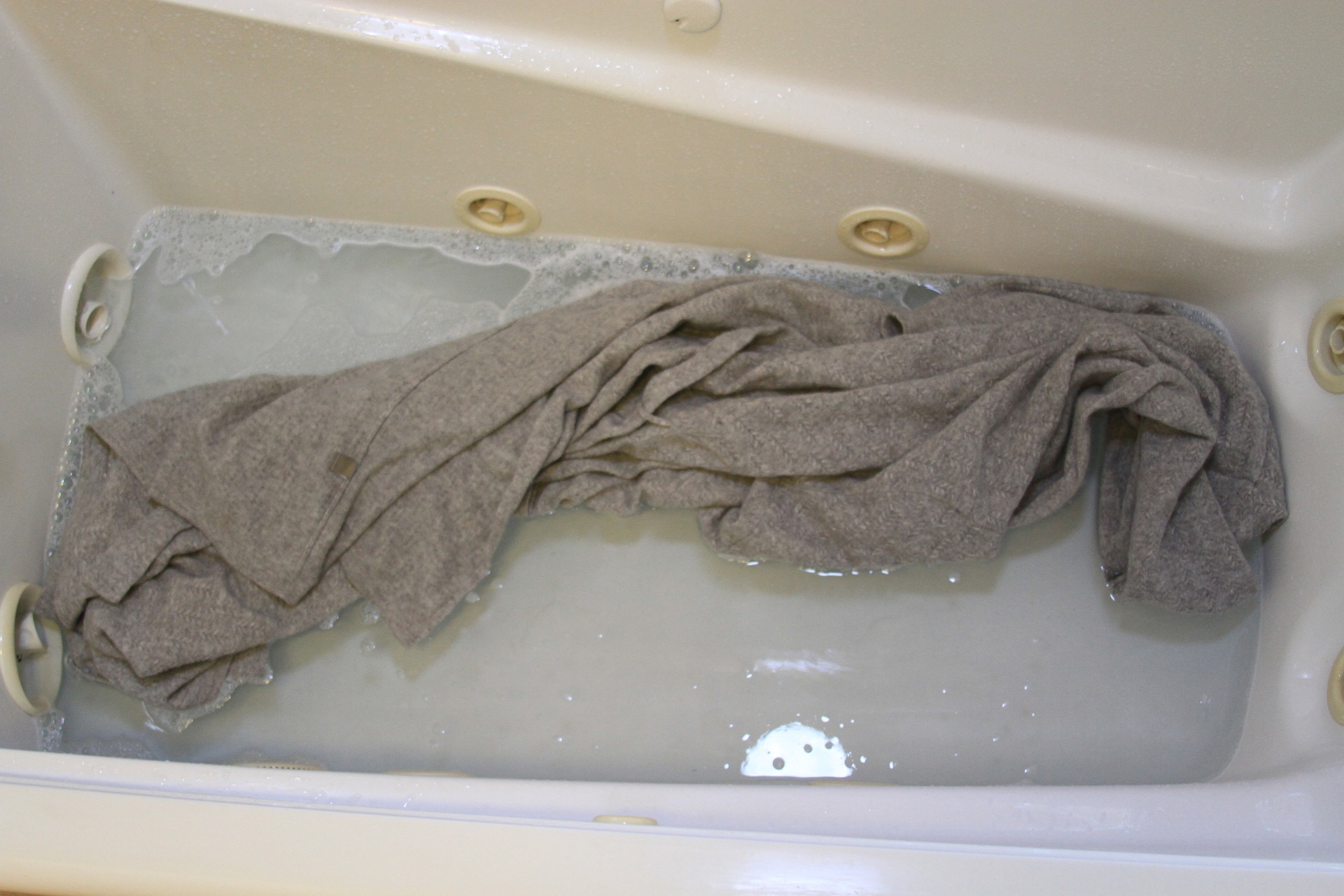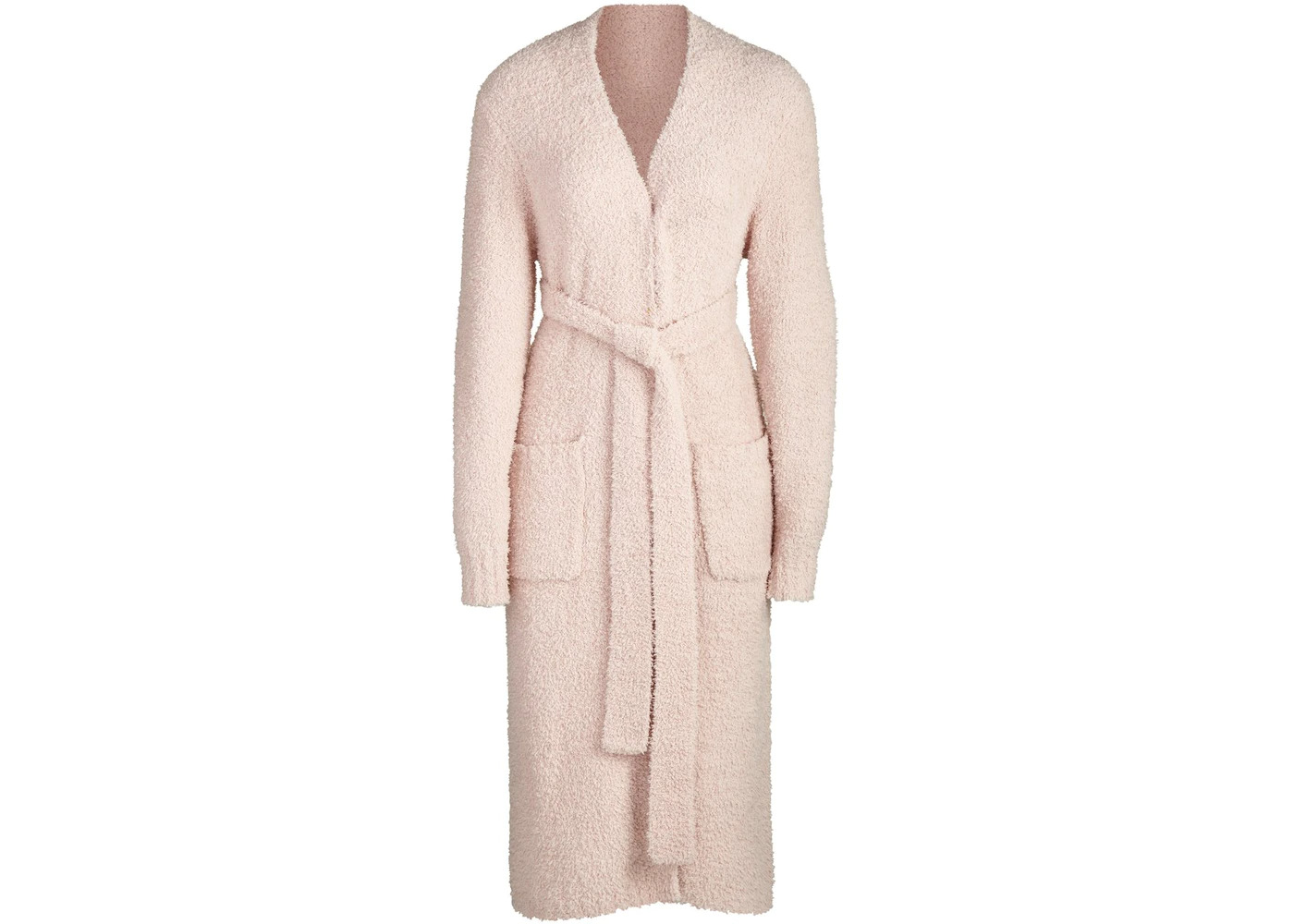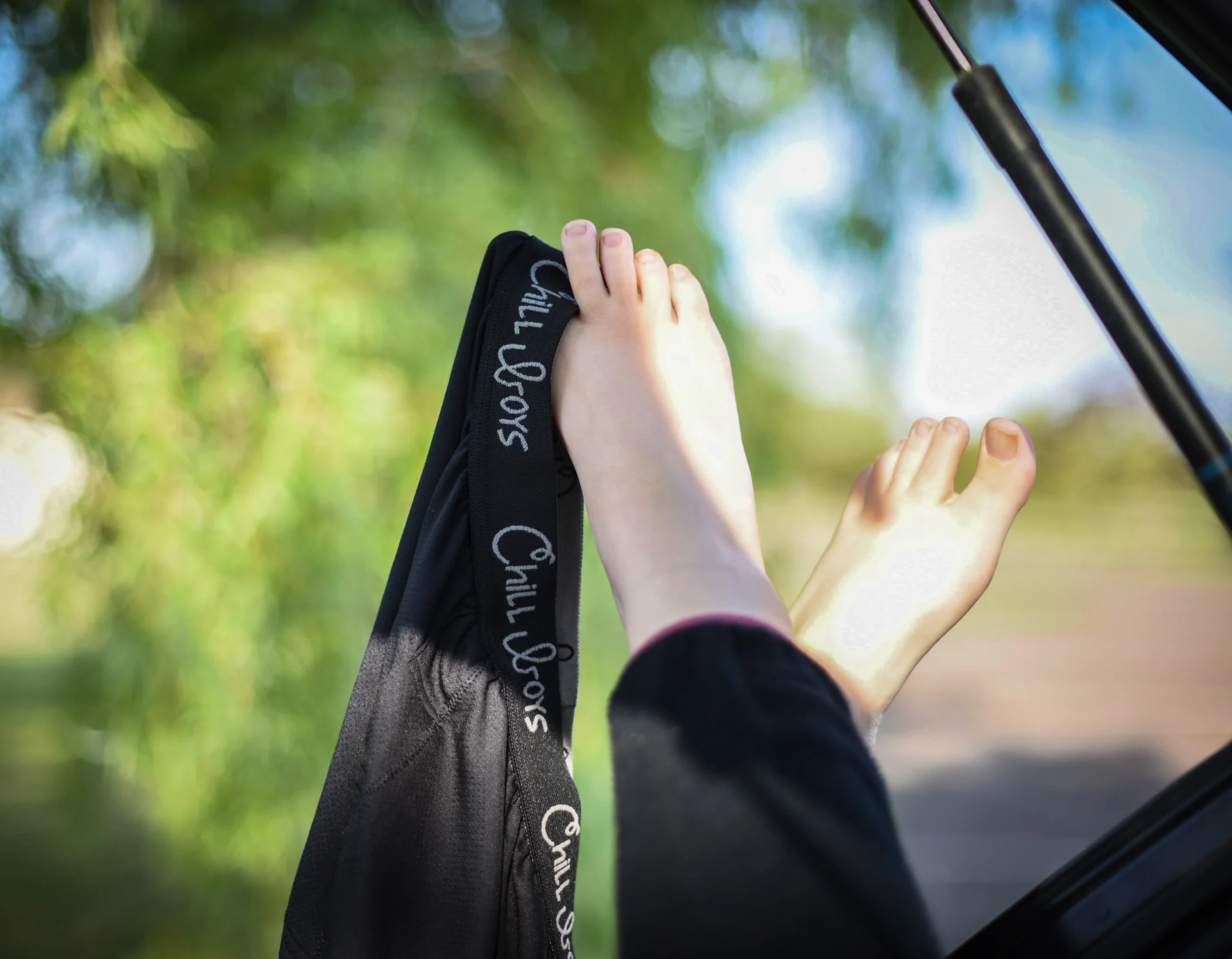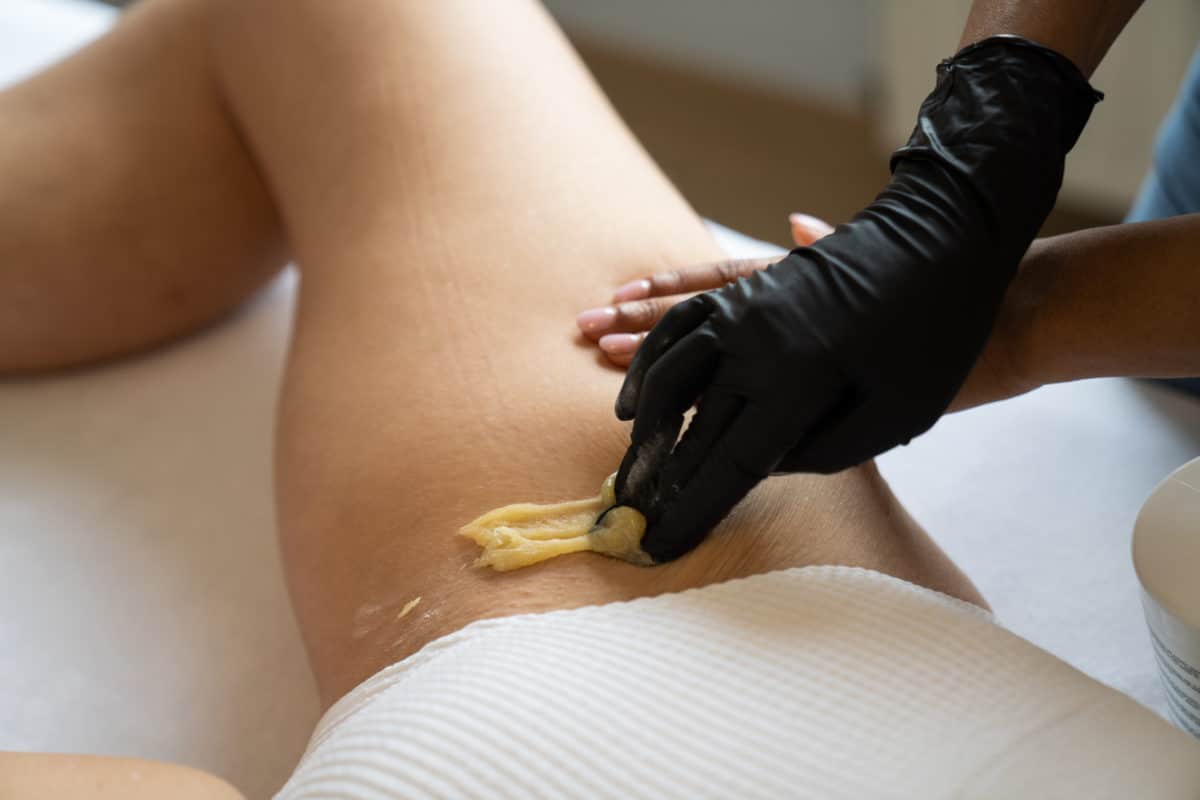

FAQs
How Often Should You Wash A Robe
Modified: July 30, 2023
Discover how often you should wash a robe and get answers to other general questions about robe care. Find useful tips and guidelines to keep your robe clean and fresh.
(Many of the links in this article redirect to a specific reviewed product. Your purchase of these products through affiliate links helps to generate commission for Under-tec.com, at no extra cost. Learn more)
Table of Contents
Introduction
A robe is an essential garment that provides comfort and relaxation, whether you’re getting ready for the day or winding down in the evening. It’s a versatile piece of clothing that can be worn after a shower, while lounging around the house, or during a spa day. With its frequent use, it’s important to understand how often you should wash your robe to maintain its freshness and cleanliness.
There are various factors to consider when determining the washing frequency for your robe. These include the type of fabric, frequency of use, personal hygiene habits, and specific washing instructions provided by the manufacturer. By understanding these factors, you can create a routine that keeps your robe clean, comfortable, and in good condition for years to come.
In this article, we will explore these factors in detail and provide you with tips on how to properly wash and care for your robe. By following these guidelines, you can ensure that your robe remains a cozy and hygienic garment that brings you a sense of comfort and relaxation.
Factors to Consider
When determining how often to wash your robe, there are several factors to take into account. These factors will help you establish a cleaning routine that suits your specific needs and ensures the longevity of your garment.
- Type of Fabric: The fabric of your robe plays a significant role in determining how often it should be washed. Natural fibers like cotton and bamboo tend to absorb more moisture and may require more frequent washing. On the other hand, synthetic materials like polyester or microfiber often repel moisture and can be worn multiple times before needing cleaning.
- Frequency of Use: Consider how often you wear your robe. If you use it as part of your daily routine, such as after showers or in the evenings, it may require more frequent washing. If you only wear it occasionally or during specific seasons, you can extend the time between washes.
- Personal Hygiene: Your personal hygiene habits also impact the frequency of washing your robe. If you are diligent about showering before wearing it, have clean undergarments, and maintain good overall hygiene, you can stretch the time between washes. However, if you tend to sweat excessively or engage in activities that make your robe dirty, more frequent washing may be necessary.
- Washing Instructions: Always refer to the manufacturer’s washing instructions for your specific robe. Different fabrics and styles may have specific care requirements. Following these instructions will help preserve the quality and integrity of your robe.
By considering these factors, you can determine the appropriate frequency for washing your robe. It’s important to strike a balance between keeping it clean and ensuring that excessive washing does not damage the fabric or cause unnecessary wear and tear. Keeping these factors in mind, let’s explore the signs that indicate your robe needs cleaning.
Type of Fabric
The type of fabric your robe is made from plays a crucial role in how often it should be washed. Different fabrics have varying levels of absorbency and durability, which directly impact their cleaning needs.
Cotton: Cotton robes are known for their softness and breathability. They are often highly absorbent, making them great for drying off after a shower or bath. However, cotton can also trap moisture and bacteria, so frequent washing is recommended. Depending on personal hygiene and frequency of use, washing a cotton robe every three to four wears is a general guideline.
Bamboo: Robes made from bamboo blend fabrics have gained popularity due to their eco-friendly nature and luxurious feel. Bamboo fibers are naturally hypoallergenic and highly absorbent, making them ideal for robes. Similar to cotton, washing a bamboo robe every few wears is recommended to maintain cleanliness and freshness.
Synthetic Materials: Robes made from synthetic materials like polyester or microfiber are often quick-drying and resistant to moisture. These fabrics are less likely to absorb odors or stains, allowing for more extended wear before washing. Depending on personal preference and use, washing a synthetic robe every five to seven wears is typically sufficient.
Silk: Silk robes are delicate and luxurious. The cleaning frequency for silk robes depends on personal preference and how often they are worn. However, due to the delicate nature of silk, it is recommended to follow the specific washing instructions provided by the manufacturer to avoid damage.
Always check the care label on your robe for specific fabric requirements and washing instructions. This will ensure that you’re taking the necessary steps to clean and care for your robe properly. Keep in mind that these are general guidelines, and personal factors like body sweat, spills, and personal preference may affect the frequency of washing.
Frequency of Use
Another important factor to consider when deciding how often to wash your robe is the frequency of use. Your robe may play a significant role in your daily routine, or it may be reserved for occasional wear. The frequency of use can help you determine the appropriate cleaning schedule.
If you use your robe on a daily basis, such as after showers or in the evenings before bed, it will likely require more frequent cleaning. Daily use increases the exposure to sweat, body oils, and environmental factors, which can lead to odors and stains. Washing your robe every three to four wears is generally recommended for regular, daily use.
On the other hand, if you only wear your robe occasionally or during specific seasons, you may be able to extend the time between washes. If you only wear it on weekends or during the colder months, for example, you may find that washing your robe every five to seven wears is sufficient.
It’s important to note that even if you don’t wear your robe frequently, it’s still essential to wash it periodically. Over time, dust, pet dander, and other particles can accumulate on the fabric, affecting its cleanliness and freshness. Additionally, if your robe comes into contact with spills or stains, it should be cleaned promptly, regardless of its frequency of use.
Ultimately, the frequency of washing will depend on personal preferences, comfort, and maintaining good hygiene. Observing the condition of your robe and using your best judgment will help determine when it’s time for a wash.
Now that we’ve discussed the frequency of use, let’s delve into the importance of personal hygiene in maintaining a clean robe.
Personal Hygiene
Personal hygiene habits play a crucial role in determining how often you should wash your robe. Maintaining good personal hygiene not only keeps your robe cleaner for longer but also contributes to your overall well-being.
If you practice good personal hygiene, such as showering or bathing before putting on your robe, you can extend the time between washes. By doing so, you minimize the transfer of body oils, sweat, and other impurities onto the fabric.
Using clean undergarments, such as pajamas or underwear, can also help maintain the cleanliness of your robe. These garments act as a barrier between your body and the robe, reducing the transfer of oils and bacteria.
However, if you engage in activities that make you sweat excessively or if your robe comes into contact with spills or stains, it’s important to wash it promptly. Sweat can harbor bacteria, leading to unpleasant odors and potential hygiene issues.
Additionally, if you are ill or have been in close contact with someone who is ill, it’s important to wash your robe regularly. Illnesses can be transmitted through contact with contaminated surfaces, and washing your robe helps minimize the risk of spreading germs.
Ultimately, personal hygiene habits are highly individual, and the frequency of washing your robe will depend on your specific circumstances. It’s important to assess your personal hygiene practices and adjust your robe’s cleaning routine accordingly to maintain its cleanliness and freshness.
Next, let’s explore the importance of following the washing instructions provided for your specific robe.
Washing Instructions
When it comes to washing your robe, it’s essential to follow the specific washing instructions provided by the manufacturer. Each robe may have unique care requirements due to the fabric type, construction, and any additional embellishments.
The care label attached to your robe will provide guidance on the appropriate washing method, water temperature, and any special considerations. Here are some general washing instructions to keep in mind:
- Machine Washing: Most robes can be safely machine washed. However, it’s important to check the care label for any specific machine washing instructions. Use a gentle cycle and mild detergent to avoid damaging the fabric.
- Hand Washing: Delicate robes such as silk or those with intricate detailing may require hand washing. Fill a basin or sink with lukewarm water and a gentle detergent. Gently agitate the robe without twisting or wringing it, and then rinse thoroughly.
- Water Temperature: The water temperature recommended for washing your robe will depend on the fabric. Hot water can shrink or damage certain fabrics, so it’s important to follow the care label’s instructions regarding water temperature.
- Drying Instructions: Check the care label for specific drying instructions. Some robes can be tumble dried on low heat, while others may need to be air-dried. Avoid direct sunlight and high heat, as these can damage the fabric.
- Special Care Considerations: Some robes may require additional care, such as using a fabric conditioner or avoiding certain types of detergents. The care label will provide guidance on any special considerations to keep in mind.
Following the washing instructions for your robe will help maintain its quality, color, and softness. It will also help prolong the lifespan of the garment. When in doubt, it’s always better to err on the side of caution and opt for gentle washing methods.
Now that we know how to wash your robe properly, let’s move on to the signs that indicate it needs cleaning.
Signs That It Needs Cleaning
Knowing when to clean your robe is crucial for maintaining its freshness and cleanliness. While the frequency of washing can vary depending on personal factors, there are certain signs that indicate your robe needs cleaning:
- Odor: If your robe starts to develop an unpleasant odor, it’s a clear sign that it requires washing. Body oils, sweat, and other impurities can accumulate in the fabric, leading to lingering smells. Freshening sprays can temporarily mask the odor, but thorough washing is necessary to eliminate it.
- Visible Stains: Spills, food stains, or makeup marks are evident indicators that your robe needs immediate cleaning. Addressing stains promptly can prevent them from becoming permanent and potentially damaging the fabric.
- Loss of Softness or Fluffiness: Over time, robes may lose their softness and fluffiness due to regular wear. If you notice a decrease in the plushness of your robe, it’s a sign that it needs cleaning to restore its original texture and comfort.
- Build-up of Dust or Lint: If your robe has been sitting in the closet or is exposed to a dusty environment, it may accumulate dust and lint. Regular washing helps remove these particles, keeping your robe fresh and clean.
- Change in Color: If you notice a change in the color of your robe, such as fading or discoloration, it may indicate that dirt and grime have built up in the fabric. Washing it will help restore the vibrancy and appearance of your robe.
It’s important not to wait too long to clean your robe once you notice these signs. Regular washing ensures that your robe remains hygienic, comfortable, and visually appealing.
Now that we know when to clean a robe, let’s explore how to wash it properly to maintain its quality and longevity.
How to Wash a Robe Properly
Properly washing your robe is essential for its longevity and overall cleanliness. Following these steps will help ensure that your robe remains in top condition:
- Read the Care Label: Start by checking the care label attached to your robe. It will provide specific instructions on how to wash your robe, including water temperature, washing method, and any special considerations.
- Pre-Treat Stains: If you notice any stains on your robe, pre-treat them before washing. Use a stain remover or gently dab the stained area with a mild detergent. Allow the stain treatment to sit for a few minutes before proceeding with the washing process.
- Choose the Right Washing Method: Determine whether your robe can be machine washed or if it requires hand washing. Most robes can be safely machine washed, but delicate fabrics or intricate detailing may require gentle hand washing.
- Select the Appropriate Water Temperature: Follow the care label’s instructions regarding water temperature. Hot water can shrink or damage certain fabrics, so it’s important to choose the correct temperature for your robe.
- Use a Gentle Detergent: Opt for a mild detergent specifically formulated for delicate fabrics. Avoid using bleach or harsh chemicals that can deteriorate the fabric’s quality.
- Wash with Similar Colors: When machine washing your robe, separate it from other garments and wash it with similar colors to prevent color bleeding.
- Gentle Cycle and Mild Spin: Use the gentle cycle setting on your washing machine to minimize agitation. This helps protect the fabric from potential damage. Additionally, opt for a mild spin cycle to avoid excessive wringing.
- Avoid Overcrowding: Avoid overcrowding the washing machine to allow proper circulation of water and detergent. This ensures that the robe is evenly cleaned.
- Follow Drying Instructions: Check the care label for specific drying instructions. Some robes can be tumble dried on low heat, while others may need to be air-dried. Avoid direct sunlight and high heat, as these can damage the fabric.
Following these steps will help you wash your robe properly and maintain its quality and softness. Always refer to the care label for specific instructions related to your robe’s fabric type and any additional care considerations.
Now that we know how to wash a robe, let’s explore the proper drying and care instructions to maintain its longevity.
Drying and Care Instructions
Properly drying and caring for your robe is just as important as washing it. Following these instructions will help maintain the quality, shape, and softness of your robe:
- Check the Care Label: Start by referring to the care label to determine the recommended drying method for your robe. It will provide guidance on whether it can be tumble dried or if it needs to be air-dried.
- Tumble Drying: If your robe is suitable for tumble drying, set the dryer to a low heat or delicate cycle. Avoid over-drying, as this can cause shrinkage or damage to the fabric. Remove the robe from the dryer while it is still slightly damp to minimize wrinkles.
- Air Drying: If your robe needs to be air-dried, lay it flat on a clean, dry towel or hang it on a clothesline or drying rack. Avoid direct sunlight, as it can fade the colors of the fabric. Ensure that the robe is thoroughly dry before storing or wearing it.
- Reshape and Smooth: While the robe is damp, gently reshape it to its original form. Smooth out any wrinkles or creases to maintain its appearance. This step is particularly important for robes made of delicate fabrics.
- Storage: Store your clean and dry robe in a well-ventilated area to prevent musty odors. Fold it neatly or hang it on a padded hanger to maintain its shape. Avoid storing it in crowded spaces or areas prone to humidity.
- Avoid Ironing: Most robes do not require ironing if they are properly dried and stored. However, if necessary, use a low heat setting or place a thin cloth between the iron and the fabric to prevent direct contact.
- Follow Additional Care Instructions: Some robes may have specific care instructions related to buttons, zippers, or decorative elements. Follow these instructions to ensure the longevity and quality of your robe.
By following these drying and care instructions, you can prolong the lifespan of your robe and maintain its softness and appearance. Always refer to the care label for any specific drying or care considerations for your particular robe.
Now that we understand the proper drying and care instructions, let’s move on to some tips for maintaining a clean robe.
Tips for Maintaining a Clean Robe
To keep your robe clean and in optimal condition, consider incorporating these tips into your robe care routine:
- Hang it after each use: Rather than tossing your robe on a chair or bed, hang it up after each use. This helps prevent wrinkles and allows any moisture to evaporate, reducing the chances of odors developing.
- Avoid wearing it while cooking or eating: To prevent spills and stains, avoid wearing your robe while cooking or eating messy foods. If accidents occur, attend to them promptly to minimize the risk of permanent stains.
- Wash separately: Unless the care label states otherwise, wash your robe separately from other clothing items. This helps prevent color bleeding and maintains the integrity of the fabric.
- Pre-treat stains: If you notice a stain on your robe, address it as soon as possible. Use a stain remover or a gentle detergent to pre-treat the area before washing.
- Place a towel under it near water sources: When wearing your robe after a shower or bath, place a clean towel underneath to absorb any drips or excess moisture. This helps prevent dampness from seeping into the fabric, reducing the frequency of washing.
- Avoid excessive use of fabric softeners: While fabric softeners can provide a pleasant scent and softness, excessive use can build up on fabrics and reduce their absorbency. Follow the care label’s guidelines regarding the use of fabric softeners.
- Regularly clean your robe’s storage area: Keep your robe clean by periodically cleaning the area where it is stored. Dust and debris can accumulate over time, which may transfer onto the fabric.
- Rotate between multiple robes: If you own multiple robes, rotate between them to allow each one sufficient airing out time between uses. This helps prevent moisture buildup and keeps your robes fresh.
- Replace worn-out robes: Over time, robes may become worn, faded, or lose their softness. If your robe shows signs of significant wear and tear, it may be time to replace it with a new one to maintain optimal cleanliness and comfort.
By implementing these tips, you can ensure that your robe remains clean, fresh, and comfortable, making it a perfect addition to your daily routine.
Now that we’ve explored various tips for maintaining a clean robe, let’s conclude our discussion.
Conclusion
A clean and fresh robe not only provides comfort but also contributes to your overall hygiene. By considering factors such as the type of fabric, frequency of use, personal hygiene habits, and following proper washing and care instructions, you can maintain the cleanliness and longevity of your robe.
Understanding the specific care requirements of your robe, such as the appropriate washing method, water temperature, and drying instructions, is essential for preserving its quality and softness. Regularly checking the care label and following the manufacturer’s instructions will help ensure that you clean your robe properly without causing any damage.
Additionally, personal hygiene habits, such as showering before wearing your robe and practicing good overall hygiene, can extend the time between washes. However, it’s important to stay attentive to signs that indicate your robe needs cleaning, such as odor, stains, or changes in its appearance.
By incorporating tips for maintaining a clean robe into your routine, such as hanging it after each use and pre-treating stains, you can minimize the need for frequent washing and keep your robe fresh between washes.
Remember to store your robe properly in a clean, well-ventilated area to prevent musty odors and maintain its condition. Regularly cleaning the storage area will help ensure that your robe stays clean and free from dust or debris.
By following these guidelines and making robe care and cleanliness a priority, you can enjoy the comfort and relaxation that a clean robe brings. So, take good care of your robe, cherish its softness, and enjoy the luxurious comfort it provides.










